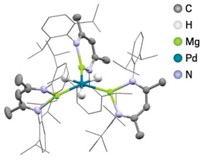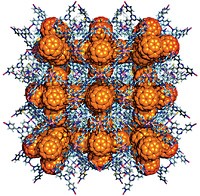Advertisement
Grab your lab coat. Let's get started
Welcome!
Welcome!
Create an account below to get 6 C&EN articles per month, receive newsletters and more - all free.
It seems this is your first time logging in online. Please enter the following information to continue.
As an ACS member you automatically get access to this site. All we need is few more details to create your reading experience.
Not you? Sign in with a different account.
Not you? Sign in with a different account.
ERROR 1
ERROR 1
ERROR 2
ERROR 2
ERROR 2
ERROR 2
ERROR 2
Password and Confirm password must match.
If you have an ACS member number, please enter it here so we can link this account to your membership. (optional)
ERROR 2
ACS values your privacy. By submitting your information, you are gaining access to C&EN and subscribing to our weekly newsletter. We use the information you provide to make your reading experience better, and we will never sell your data to third party members.
Physical Chemistry
Intrazeolitic chemistry creates new molecules
Chemists use crystallography to spy unusual compounds that form when gases interact with silver in zeolite pores
by Stephen K. Ritter
March 14, 2016
| A version of this story appeared in
Volume 94, Issue 11
For the past several decades, Karl Seff of the University of Hawaii and his coworkers have been conducting intrazeolitic chemistry in which they use X-ray crystallography to watch what happens inside the tiny pores of zeolites as they are heated or chemically treated. Put another way, Seff says, “it’s doing chemistry in a 1-nm test tube.” The research has paid off with observations that could be helpful in understanding how the industrially important catalysts and sorbents work, as well as with the discovery of a few unexpected new molecules (J. Phys. Chem. C 2016, DOI: 10.1021/acs.jpcc.5b11490). The Seff team’s work has centered on the synthetic sodium aluminosilicates known as zeolites A and X in which some sodium ions are replaced by silver ions. In one observation, the researchers noticed that the crystallinity of the material waxes and wanes depending on the dynamics of oxygen atoms in the zeolite framework and the presence of O2. Furthermore, the team observed formation of quantum-dot-like silver halide clusters and octahedral Ag6 clusters within the pores under various conditions. Seff notes that Ag6 is the smallest possible single crystal of silver that can form. When passing ammonia through the silver-exchanged zeolites, the researchers observed formation of unprecedented bent N3H5 and cyclic N3H3. And with methanol, they saw cyclic C3H3O33+—a new molecule that is electronically equivalent to benzene. Seff cautions that this menagerie of molecules may only be spotted within the pores of zeolites and be impossible to isolate outside those confines.





Join the conversation
Contact the reporter
Submit a Letter to the Editor for publication
Engage with us on Twitter